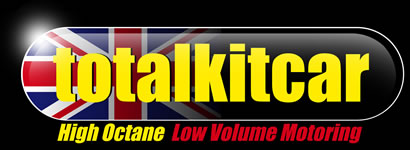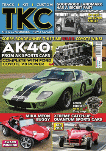SHORROCK SUPERCHARGERS – WORDS BY STEVE HOLE
Another of the great sixties ‘speed’ companies was Shorrock Superchargers and their products were in great demand to owners of various car makes with Ford engines being their prime area of success. Their appeal was helped by the fact that the donor engine needed no modifications.
That sounds a bit too good to be true and it slightly was as they did have weaknesses but there were plenty of happy Shorrock customers up and down the land.
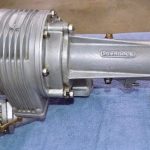
The ‘Specials’ movement of the early sixties took to them for sure and if an Ashley, Falcon or Rochdale’s Ford sidevalve had a Shorrock C75B ‘charger fitted it was certainly a big plus point for the potential buyer.
It’s not hard to see why they were so popular as they gave an instant hike in horsepower at a realistic price. Much the same as the likes of Rotrax’ products do these days.
The man behind Shorrock Superchargers was an engineer called Christopher Shorrock, a native of Preston, born in 1901. He patented his invention as far back as 1933 although didn’t set up a company until the following year when he set up Centric Superchargers with his friend, James Haydock.
The company was involved in motor-racing and tuning and they also help devise the GTP motorcycle for Velocette. However, despite the considerable success, the company went bust in February 1939. During the war, Christopher was tasked with supercharging submarines and tanks for the Ministry of Defence.
In June 1947, Shorrock was back with a new company called Shorrock Superchargers Ltd with factories in his hometown of Preston and another in Willenhall, Staffordshire.
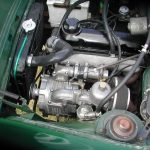
This time around with Shorrock in sole control was more successful although he didn’t really enjoy direct interaction with customers and was much happier designing and developing his products. This showed itself when Christopher took a job as a development engineer with tractor magnate, Harry Ferguson in the summer of 1951. This was around the same time when Ferguson merged his tractor division with Massey-Ferguson who acquired Shorrock’s company in August 1952.
It’s never been documented if Shorrock sold it to Ferguson or Ferguson could see the obvious potential for his own business. One thing that is known, however, is that Shorrock Superchargers moved to Harry Ferguson’s engineering, design and administration department in Fletchampstead near Coventry.
Christopher’s operation didn’t last long at Ferguson though as Sir Alfred Owen’s Rubery Owen took over the brand with Christopher installed as technical director with a move to Wednesbury in 1957, as a result.
I think it has to be said that Shorrock supercharger sales didn’t realise its full potential until Sydney Allard and his son, Alan became involved and accelerated sales accordingly. Their adverts and general promotion of Shorrock superchargers drew enthusiasts to the doors of their Upper Richmond Road, Putney speed emporium.
The Allards understood the potential that a Shorrock supercharger could have on a low-powered engine, the sort of engines fitted to all manner of enthusiasts’ cars. The performance hike available was effective and far less expensive than by other means. With fuel rationing in place until May 1950, their appeal was obvious.
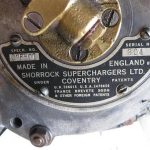
They worked great on various engines including &&*&**&&*&*&**&*&*&&**&*&*&&**&*&&* with the majority going to owners of Ford engines, particularly the sidevalve.
Christopher Shorrock had already had notable motorsport success, however. In 1938, Lieutenant-Colonel Alfred ‘Goldie’ Gardner broke the speed record on the Frankfurt-Darmstadt Autobahn in an MG reaching a speed of 187.616mph. Incidentally, Gardner was later the first person to break the 200mph barrier on land.
During the height of their success, Allard was shifting up to 75 Shorrock superchargers per month and although various marques were catered for including Mini, MGB, Midget, Sprite, VW Beetle, Triumph, Renault Dauphine and Ford with the latter being the most popular (particularly for the sidevalve engine).
Stirling Moss ceraintly did his best to aid sales. In 1957, he broke the sub-1500cc class speed record at Bonneville, Utah in an MG Streamliner dubbed the ‘Roaring Raindrop’ setting a two-way average speed of 245mph.
For their part, Allard Engineering were rapidly becoming experts in the art of supercharging (and turbocharging, for that matter) and also acted as agents for the Wade brand of roots-type superchargers made near Gatwick Airport.
What made Shorrock’s superchargers so special? It was unique in that it used a sliding vane centric principle with the vanes travelling incredibly fast extremely close to the walls of the compressor.
It was quite normal for them to be a bit smoky on start-up and to burn a fair amount of oil as lubricant accumulated in the bottom of the supercharger when the engine was switched off. As it was it used a total loss lubrication system and as such the units were always on the knife edge of superb and transformative performance or a smoky blow up.
Shorrock’s device was a precision instrument for its day with the oil dispensed through a tiny gap in a pin described as being akin to an eye of a needle. This could get blocked if the system was neglected and this would result in a toasted engine.
When I was a kid I recall that one of my dad’s mates had a feisty little Mini Cooper to which he fitted a Shorrock 72B supercharger. He loved it and it transformed the way the engine delivered its power, doing nothing below 4000rpm but becoming a very agitated Staffordshire Bull Terrier above 5000rpm. I remember that it had a very distinctive whine, indicative of a supercharged engine.
Trouble was he liked to give the car stick all the time; be it on the motorway or going down to the local Home & Colonial store in Whitehorse Road, West Croydon. Great fun until it wasn’t. He liked to rev it to 7000rpm, which one day caused the vanes to dig themselves into the unit’s casing resulting in a snapped shaft and a noisy, smoky, oily poorly A-Series engine.
However, they didn’t really have a reputation for being unreliable as they weren’t. Sydney Allard certainly sold too many of them to grateful customers for the Shorrock to be considered a lemon. An astute businessman as mentioned he sold lots of Shorrock C75B and C145B superchargers usually in kit form. His adverts of the day were very impressive and fuelled sales.
The smaller Shorrock supercharger, the C75B came with the rubber mounting pad, outlet pipe, pressure relief valve and 4in diameter blower pulley at a package price of £100 (about £1556 in today’s money) and being the fine salesmen that he and son Alan were, he often sold customers further speed parts to go with it including a spikier camshaft, modified cylinder head, forged pistons, oversize valves and a big bore exhaust. You could buy the lot or just the supercharger.
The fact is the Shorrock was easy to fit and on its own gave a minimum of 60 per cent performance hike depending on the ‘donor’ engine. When you had an old Ford 997 unit giving a stock 39bhp this was a massive increase.
The larger C142B Shorrock was for slightly larger capacity engines and required a 2in rather than 1½in or 1¾in SU carburettor and needed a 4½in rather than 4in Duplex drive pulley.
The other added benefit of the Shorrock superchargers were that the process was reversible so if you wished you could remove it from your old car and fit it to your new one.
In September 1960, Sydney Allard did a deal with Christopher Shorrock that saw him became worldwide sales agent for the superchargers with the exception of BMC fitments which were handled by Donald Healey – and therefore, John Sprinzel who acted as Healey parts agent from his Kensington Mews premises.
Allard’s supercharger sales increased dramatically with the arrival of new marketing manager Gerry Belton in 1961 and he drove sales by arranging press events at venues such as Brands Hatch circuit for motoring journalists to sample a variety of cars fitted with Wade and Shorrock superchargers. What they subsequently wrote about, especially after being given a lavish lunch really did inspire many more motoring enthusiasts to purchase a Shorrock supercharger kit.
By 1965, Allard owned the whole kit and caboodle although business ceased in 1967 with the death of Sydney. With him too went the Shorrock supercharger.§
